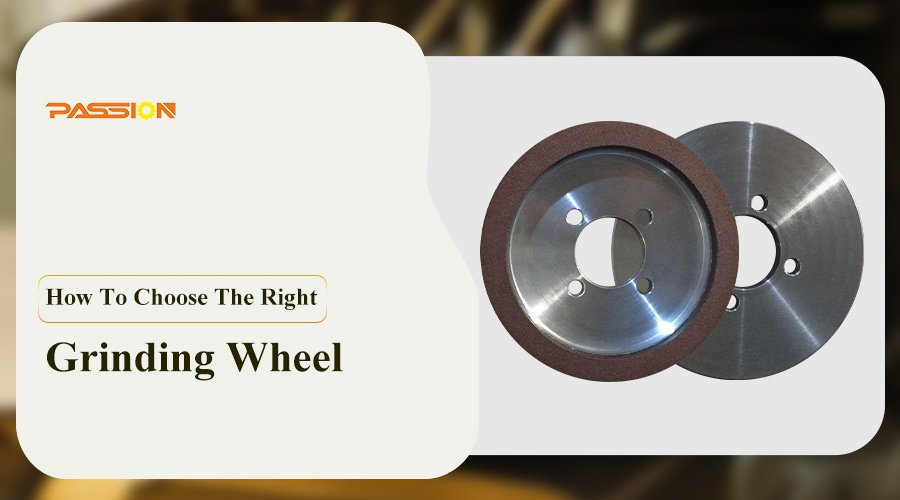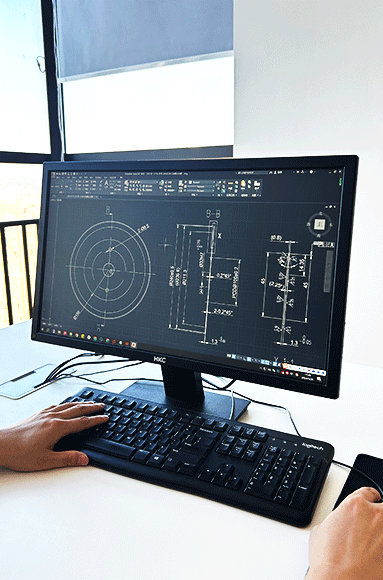In the world of industrial blade production, picking the right grinding wheel is a big deal. The right wheel will make you more efficient, save you money, and make sure every blade you grind meets the industry’s standards. But picking a grinding wheel can be tough. There are a lot of choices out there. This guide will break down the key things you need to think about, so you can pick the best wheel for your grinding.
What Factors Should Guide Grinding Wheel Selection?
Picking the right grinding wheel depends on a few key things, like what kind of material you’re grinding, what kind of finish you want, and what the wheel is made of. By thinking about these things, you can make your grinding better, make your tools last longer, and get a better finish.
How Would You Select The Correct Grinding Wheel?
To select a grinding wheel, start by identifying the material you’re working with. Different materials, such as steel, aluminum, and composites, require specific abrasives. For example, aluminum oxide is generally used with ferrous metals (like steel), while silicon carbide is better for softer metals and non-ferrous materials. Here’s a quick overview:
Steel and Iron Alloys: Choose aluminum oxide, which is durable and effective on hard materials.
Non-Ferrous Metals: Silicon carbide is ideal for soft metals like aluminum, brass, and copper.
Ceramics and Hard Materials: CBN or diamond abrasives provide excellent cutting and precision for extremely hard materials.
What Grinding Wheel Do I Need?
Figuring out the right grinding wheel involves thinking about how hard your material is and what you want it to look like when you’re done. Here are some common materials and the wheels people usually use on them:
Iron or Steel Alloys: If you want something that’s going to last a long time and cut sharp, CBN (Cubic Boron Nitride) wheels are the way to go.
Carbon-Based Materials or Granite: If you want something that’s going to cut sharp and give you a shiny finish, diamond wheels are the way to go.
General Metals and Alloys: Aluminum oxide wheels are a good all-around wheel that will work on lots of different metals. They’re a good balance between being hard enough to last a while and cutting fast enough to get the job done.
Which Factors Decide The Selection Of The Grinding Wheel?
When you’re picking a grinding wheel, you need to think about a few things that can make a big difference in how well it works:
How hard the material is and what kind it is: Harder materials need tougher abrasives, like diamond or CBN, while softer materials work well with abrasives like silicon carbide.
How smooth you want the finish and how accurate you need to be: The higher the grit size, the smoother the finish, but the less material it removes. The lower the grit size, the more material it removes, but the less accurate it is.
How hard you’re pushing: If you’re pushing really hard, you need a harder bond. If you’re pushing really light, you need a softer bond. The softer bond wears down faster, but it gives you a finer finish.
How Is The Grinding Wheel Selected For A Particular Job?
For each unique job, you have to think about how hard the material is, how much material you have to take off, and what kind of finish you want. For example, if you have a hard material and you just want to take off a lot of material really fast, you need a coarse grit and a tough bond. On the other hand, if you’re working on something soft and you need a really good finish, you need a fine grit and a soft bond so you can get a better finish and have more control.
How much material you have to take off: The coarser the grit, the more material it takes off, which is good if you have a lot of material to take off.
What kind of finish you want: The finer the grit, the smoother the finish, which is important if you’re doing something that has to be really precise.
How hard the bond is: If you’re taking off a lot of material, you need a hard bond. If you’re doing something that’s really delicate, you need a soft bond, especially if you’re working with something that’s sensitive to heat.
Additional Considerations In Grinding Wheel Selection
Grit Size
Grit size is one of the things you need to think about when you’re picking a grinding wheel. The higher the grit number, the finer the finish. The lower the grit number, the coarser the cut. Here are some examples:
Coarse Grit (10-24): This is for when you want to take off a lot of material and you don’t care what the finish looks like.
Medium Grit (30-60): This is for when you want to do some general-purpose grinding and take off a little bit of material.
Fine Grit (70-180): This is for when you want to do some really nice work and you want a nice finish.
Superfine Grit (200 and above): This is for when you want to polish something or you want to do some really fine work.
Abrasive Type
The abrasive is the part of the grinding wheel that does the cutting. Here’s a quick rundown:
Aluminum Oxide: This is what you want to use when you’re grinding steel and other ferrous materials.
Silicon Carbide: This is what you want to use when you’re grinding softer metals, non-ferrous metals, and things that are really brittle, like glass or plastic.
CBN: This is what you want to use when you’re doing some really high-precision grinding and you’re grinding really hard stuff, like hardened steels.
Diamond: This is what you want to use when you’re grinding ceramic or carbide. It’s really sharp and it lasts a long time.
Bond Type
The bond is what holds all the little pieces of abrasive together in the grinding wheel. There are a few different kinds:
Vitrified Bonds: These are good when you want to cut fast and you want something that’s going to last a long time, especially if you’re doing some really precise grinding.
Resin Bonds: These are softer and they wear down faster. You use these when you’re doing something that doesn’t get as hot and you’re not pushing as hard.
Metal Bonds: These are mostly used with diamond or CBN wheels. You use these when you’re grinding something that’s really hard and you want it to last a long time.
Wheel Speed And Coolant Use
When you’re grinding, you’re going to make heat. Heat can wear down the wheel and mess up your workpiece. Think about how fast your machine is going and whether you need coolant. Using coolant can help keep things cool, keep your wheel from falling apart, and give you a smoother finish on your workpiece.
In industrial blade manufacturing, choosing the right grinding wheel is essential for quality results. By understanding and selecting the appropriate wheel type, grit size, abrasive, and bond, companies like PassionBlade can maximize grinding efficiency, control costs, and produce consistently superior blades. Whether working with steel, carbide, or composite materials, choosing the right wheel enhances performance and sets your product apart in a competitive market.
For more detailed guidance or customized grinding solutions, PassionBlade is here to help make the best choice for your specific application. Reach out to us today to ensure your grinding needs are met with precision and efficiency.



